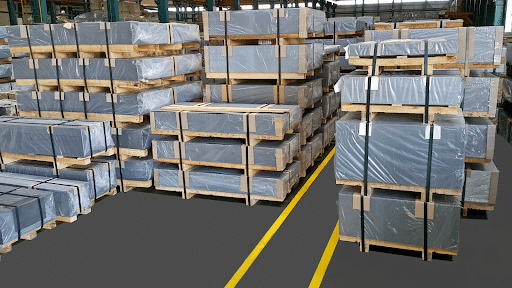Trucking represents 72.5 percent of all tonnage carried by all modes of domestic freight transportation and that tonnage continues to rise.
Faced with continued driver shortages and supply chain disruptions, how can your company keep growing? How can you get more from the resources you have?
Transportation routing software helps you cut costs and increase efficiency. It can optimize routing, streamline dispatching, and let you track your trucks in real-time. You need the right software for your business to get the most benefit, though.
Make an informed choice by asking these seven questions when evaluating transportation routing software.
1. Does This System Optimize Load Planning And Routing?
Most transportation routing software providers say they offer transportation route optimization. However, the only way to truly optimize your truck routes overall is by finding the best combination of orders first. Ask any software provider you’re considering if their system is limited to only routing trucks or if it will figure out your load plan and routing together.
You have a practically endless number of ways to combine your orders onto trucks. You want loads that minimize mileage and driver time while giving you the heaviest possible truck weights. That depends on how orders are combined onto your trucks. Accordingly, you need a system that takes into account how items can be loaded onto trucks when planning loads.
A huge number of factors go into optimizing your load planning and routing, such as:
- When customers are open to accept deliveries
- Matching orders to their required trucking equipment types
- Loading constraints or special handling requirements
- Product compatibility, meaning different types of orders that can or can’t ship together
- Predictive traffic patterns
- Route time limits and drivers’ hours of service
- Tolls
- Special customer instructions (i.e only accepting deliveries on certain types of trucks)
If your target is efficiency, your transportation management system should explore all the different ways loads and routes can be built. To do that, the system must take these factors into account. Be sure the software provider has these bases covered before you move forward.
2. Does This System Use Predictive Traffic And Adjust To Real-Time Traffic Changes?
The second important question is whether the transportation routing software uses predictive traffic and real-time traffic updates. Predictive traffic avoids routing into traffic jams at the times of day and directions of travel when they are present. Real-time traffic updates optimal routes when loads are actually out for delivery.
These are two key elements of route optimization.
Predictive Traffic
Predictive traffic helps your fleet avoid traffic problems before they happen. It uses historical traffic patterns and artificial intelligence to avoid routing trucks right into the morning or evening rush. It can predict where and when slowdowns will occur.
Predictive traffic takes into account the ways traffic patterns change throughout the day. Transportation routing software should be able to give you accurate predictions on large and small road networks. This maximizes the efficiency of your drivers and avoids wasted time sitting in traffic.
Real-Time Traffic Updates
In the transportation management world, predictive traffic helps avoid traffic jams before they occur. But when the loads are being planned (typically the day before), it’s impossible to know that a traffic-snarling accident is going to happen. That’s where real-time traffic comes in.
Adjusting to real time traffic changes gives your drivers the information they need to keep moving. Be sure the software platform has onboard turn-by-turn routing that incorporates real-time traffic and adapts to changing circumstances on the road.
Combining predictive traffic and real-time route adjustments helps you reduce costs. You avoid lost driving time and vehicle wear and tear. You make more deliveries on time, which improves customer satisfaction.
3. Does This System Have Dynamic Route Planning?
Another feature to ask about is dynamic route planning. Dynamic route planning lets you start planning the schedule before all orders are captured. It helps you handle last-minute orders and delivery changes.
Dynamic route planning includes many different types of possible loads. Maybe a route should include outbound deliveries, a pickup and transfer between third parties, and a pickup at a vendor to bring back to the warehouse. If you only plan the outbound deliveries, you’ll have problems trying to fit in the rest.
These capabilities are critical with the fast pace of modern order fulfillment. If a customer’s order or preferences change while the driver is already out to deliver, you need software that can adjust existing routes automatically. The platform should re-optimize routes so that you’re still using your resources most effectively.
Dynamic route planning ensures the software is versatile enough for the demands of your business.
4. How Fast Is This System?
The overall speed of the software is very important. A system isn’t very useful if it can’t process multiple stops, routes, and adjustments in real-time. You and your drivers can’t afford to wait several minutes for each optimum route request.
You need a software solution that will quickly and automatically route all your orders on all your trucks.
5. How Does This System Handle Dispatching?
The dispatching interface is another software feature to ask about. You want a centralized dashboard that lets dispatchers visualize pickups, orders, transfers, and other types of product movement quickly and easily. The dispatch control should keep important information for each order in one place.
You need to track information like:
- Order attributes
- Hazardous materials codes, if applicable
- Product dimensions, if applicable
- Packaging types
- Special handling requirements
- Required equipment
- Delivery and pickup locations
- Customer requirements, such as open and close times
An easy-to-use dashboard helps eliminate errors. Dispatchers can make better decisions more quickly. The dispatching function of your transportation routing software lets you organize and store your vital logistics information.
6. How Does This System Integrate GPS Tracking?
A robust GPS tracking feature should be part of your transportation management system. Ask about how the system will let you track all your trucks, capture proofs of delivery, and notify customers of their deliveries and pickups.
GPS tracking lets you give your customers up-to-date ETAs for deliveries. A survey found that almost 70 percent of consumers rank the ability to track orders in their top three considerations when buying online.
Another useful feature related to GPS tracking is the ability to capture proofs of delivery in real-time. Look for software that automatically adds images and proofs-of-delivery to your orders and trucks.
You have records and backups in case disputes come up later. You can invoice customers in real-time, shortening your cash cycle.
7. Does this System Know the Unique Needs of My Business?
A final important question is how the software will adapt to the unique needs of your business. You want a software package that truly understands the ins and outs of your industry.
Then you can adapt the software to fit your business instead of changing your business to fit the software. You’ll get functionality you may not even have anticipated needing.
The vendor will understand your needs and challenges. You won’t waste time bringing someone up to speed on how your business runs.
Transportation routing software should be able to change as your business changes. Future growth, new products, or different geographical areas shouldn’t mean having to find a new software solution. Software that understands your industry can support and even promote the growth of your business.
Choosing the Right Transportation Routing Software
You have many transportation routing software systems to choose from. Asking these seven questions will help you compare the options to find the right solution for your company.
When you’re looking for best-in-class transportation routing software to move your business forward, you can count on Headlight Solutions. Headlight is a cloud-based software technology. Our cutting-edge artificial intelligence automates and optimizes your loads and routes.
Improved routing from our system results in 10 percent fewer miles driven and 11 percent fewer total routes on average. Request a demo today and see what Headlight can do for you.



